Opinion & Analysis
An interview with Jon Cavalier, amateur golf course photographer

A congregation of golf course architecture aficionados gathers regularly on the internet, to preach the word of design. Their Stonehenge is a website called Golf Club Atlas, and when the denizens aren’t posting long-form pieces on golf course architecture history, they engage in smoldering debate on the origin, merit, and authenticity of architects, their decisions, and the outcome of those decisions. Members of the community often gather, site unseen, for events called the King’s Putter, the Midwest Mashie, and the Knockout. Their allegiance is unwavering, the stuff of legends, even when a match is on the line, or a favorite course’s origin is called into question.
Many on the site have money and the wherewithal to join, or travel to as guests, the world’s the great clubs. Many others do not, and garner knowledge through the descriptions of these sojourners. To the great benefit of all, members like Joseph Bausch (a Villanova University professor) and this writer (not a Villanova University professor) post their images for all to view.
More than any other, and in a brief period of time, Jon Cavalier has emerged as the lens witness to the glory of golf course architecture. Cavalier shoots more courses, with greater frequency, than one might think humanly possible. What exceeds belief, is that photography is not his career. Cavalier is a lawyer, based in Philadelphia. One of his passions is golf course architecture and its photography. Without him, golfers on Golf Club Atlas and Instagram and Twitter (where he post as @linksgems) would not have access to the Pine Valleys, the Cypress Points, and the Yeaman’s Halls of this country and the world. It is our pleasure to present this interview with him, along with a dozen of his favorite photos. If you don’t know the spots, enjoy their beauty and follow Mr. Cavalier on social media for a daily dosage.
1. How did you transition from just golfer to golfer and photographer?
I’ve been an avid golfer for about 20 years now. I picked the game up in college after aging out of traditional sports due to rapidly declining athleticism. I was hooked after my first round. At the same time, I’ve always had at least a passing interest in photography. And as best I can remember, I photographed a golf course for their website (I built the website too) back in 2002 or so. But for some reason, I never really combined the two until 2013 or so. As it happened, I was playing Somerset Hills on a gorgeous fall day and had a camera in the car – the fall colors were so beautiful that I decided to bring the camera out with me. Afterwards, I realized that I’d enjoyed taking the photos almost as much as I enjoyed playing the course. I’ve been doing both ever since.
2. Who inspired/motivated you to undertake golf course photography?
I’ve always been inspired by the top golf photographers — guys like Walter Iooss, Evan Schiller (@Evan_Schilller_Photography) and Jacob Sjoman (@sjomanart), and other talented guys like Ben Peters (@thegolfhawk) and Mike Gibbons (@gibbonsphoto). Beyond that, my biggest source of both inspiration and motivation is the people who like seeing my photos and who asked to see more, especially those on the GolfClubAtlas forum and those who follow me on social media. My wife, who had already been putting up with my full blown golf habit, has always encouraged the photography as well.
3. When did it transition from more than something fun, to something bigger?
That’s a great question, and I suppose the answer depends on what is meant by “something bigger.” As it stands, even now, I take and share golf photos because it’s fun and I enjoy doing it. Taking photos adds to my enjoyment of a round of golf, and sharing them has led to interactions with so many great people, many of whom I am fortunate to now call dear friends. If golf photography ever stopped being fun, I’d stop doing it.
4. Talk equipment for a moment-what camera and lens do you love, and what software do you use for editing?
I’ve been shooting mostly Sony cameras for the past few years, and I’m a big fan. My go-to is a Sony a7Riii mirrorless with either a Sony OSS 24-240 or a Sony 24-105 G OSS lens. This combo offers great versatility and photo quality, and is perfect for golf photography.
When I want something smaller, I use a pocket-sized Sony RX-100 MK6, which is a terrific camera for its size. I’ve used the RX-100 series since the MK3, and they are excellent.
Occasionally, I’ll shoot with a small Leica, a Fuji X100, or my iPhone X.
For the aerial photography, I’ve always used DJI Phantom drones. I’m currently using a Phantom 4 Pro 2.0, but I’ve used, crashed and/or given away every model of Phantom going back to the original. The photo and video quality has improved by leaps and bounds in the latest models.
5. You are a Golf Club Atlas participant. How did the discussion board of that site impact your growing enthusiasm for golf course photography?
Enormously, and in several different ways. First and most importantly, the GCA discussion board launched and nurtured my infatuation (and subsequent obsession) with golf course architecture. This led me to seek out golf courses that I otherwise might have ignored or about which I’d never have learned. I believe an understanding and appreciation of golf course architecture is essential for quality golf course photography, and there is no better resource for that than GCA.
Beyond that, the GCA forum was the first place I shared my photos. I believe the first photos I posted were from that round at Somerset Hills, and the response was overwhelmingly positive. The ability to share and subsequently discuss my photography and the subject course not only gave me an outlet for my shots, but it certainly encouraged me to take and share more. And the criticism helped me become a better photographer.
I similarly credit and appreciate Andy Johnson and Jason Way at The Fried Egg for the same reasons.
6. At what point did you incorporate drone photography into your arsenal, and how did that change your approach to a complete shoot?
I was a very early adopter of drone technology to take aerial photos of golf courses. It was clear to me right away that this tech was perfectly suited to shoot golf. I don’t know that having the ability to shoot aerials changed my approach to photographing golf courses much, but it certainly gave me the ability to see and shoot courses from a different and unique perspective.
7. What do drone and ground photography offer, that the other does not?
Drone photography offers two main benefits that you just can’t get from the ground. First, aerial photography gives the ability to capture the entire golf course and its surrounds in one frame. We have all seen and love those old photos of classic courses taken from a low-flying airplane. Drone photography allows a “zoomed out” perspective of the course, which can show the full routing, how the holes and hazards interconnect, and how the course interacts with its environment. Second, drones allow us to capture a course from an infinite number of angles and perspectives. Ground photography is fundamentally two-dimensional – there are only so many places to stand and take a photo. Drones allow us to place a camera almost anywhere in three-dimensional space, which in turn allows for unlimited creativity and perspective. These angles, which we would never otherwise see, can be really compelling.
The advantage of “regular” photography is that it shows the course from the perspective of the golfer – the perspective we’re used to seeing. And so it’s ideal for taking shots that “transport” the viewer to the course.
For me, the ideal way to capture a course is through a mix of both forms.
8. Which golf course has given you the greatest artistic experience in shooting?
That’s a tough question. The courses I most enjoy shooting tend to be the courses that have both compelling visuals and extremely interesting golf architecture. So the top of the list, you’d certainly find courses like National Golf Links of America, Sleepy Hollow, Cypress Point, Fishers Island, Shinnecock Hills, Eastward Ho, Maidstone, Monterey Peninsula CC and Sand Hills. These are all courses that are quite beautiful by any definition and are also outstanding examples of brilliant golf course design.
At the same time, I also really enjoy the challenge of photographing courses that lack ocean or mountain views and thus may not be considered traditionally beautiful by everyone, but that are excellent from an architecture standpoint – courses like Chicago Golf Club or Oakmont. After all, it’s hard to take a bad photo of a place next to the ocean like MPCC, but doing justice to the quality of the course at a place that doesn’t have the visuals to fall back on is very satisfying.
9. Is there a golf course that you have yet to shoot, that you would like to?
Too many to count. It’s certainly a fantasy to shoot (and play) Augusta National. Beyond that, it’s all international courses: The Old Course, North Berwick, Royal County Down, Dornoch, Portrush, Ballybunion, Lahinch and countless others in the UK, and Royal Melbourne, Kingston Heath, Tara Iti, Barnbougle Dunes, Cape Kidnappers, Jack’s Point, Cape Wickham, Kauri Cliffs and many others in Australia and New Zealand. I’d also love to shoot Morfontaine in France – from what I’ve seen, it looks amazing.
10. BONUS QUESTION: What question haven’t we asked, that you wish we would? Ask it and answer it please. Thank you for your time.
What is the best thing that has come from your golf course photography?
As I mentioned above, I’ve met so many wonderful people as a result of my photography, and I’ve been able to see some of the best golf courses in the world. But even better still, thanks to the incredibly loyal and supportive people who follow me on twitter and Instagram, I’ve been able to financially support some charities that are important to my wife and me. For the last two years, I’ve sold a photo calendar that has enabled donations of over $15,000 to Woodstock Farm Sanctuary. Just recently, thanks to the work of my good friend Tyler Petrovich (@thetravellinggolfer), we auctioned off a glass print of Pebble Beach and raised almost $1500 for SLC6A1 Connect and Milestnes for Maxwell. It’s been truly gratifying to be able to use an avocation that I enjoy to support those who need a bit of a hand, and we’re always looking for new ways to do more of it.
- LIKE47
- LEGIT4
- WOW11
- LOL9
- IDHT1
- FLOP1
- OB8
- SHANK29
19th Hole
Vincenzi’s LIV Golf Singapore betting preview: Course specialist ready to thrive once again

After another strong showing in Australia, LIV Golf will head to Sentosa Golf Club in Singapore looking to build off of what was undoubtedly their best event to date.
Sentosa Golf Club sits on the southern tip of Singapore and is one of the most beautiful courses in the world. The course is more than just incredible scenically; it was also rated 55th in Golf Digest’s top-100 courses in 2022-2023 and has been consistently regarded as one of the best courses in Asia. Prior to being part of the LIV rotation, the course hosted the Singapore Open every year since 2005.
Sentosa Golf Club is a par 71 measuring 7,406 yards. The course will require precise ball striking and some length off the tee. It’s possible to go low due to the pristine conditions, but there are also plenty of hazards and difficult spots on the course that can bring double bogey into play in a hurry. The Bermudagrass greens are perfectly manicured, and the course has spent millions on the sub-air system to keep the greens rolling fast. I spoke to Asian Tour player, Travis Smyth, who described the greens as “the best [he’s] ever played.”
Davis Love III, who competed in a Singapore Open in 2019, also gushed over the condition of the golf course.
“I love the greens. They are fabulous,” the 21-time PGA Tour winner said.
Love III also spoke about other aspects of the golf course.
“The greens are great; the fairways are perfect. It is a wonderful course, and it’s tricky off the tee.”
“It’s a long golf course, and you get some long iron shots. It takes somebody hitting it great to hit every green even though they are big.”
As Love III said, the course can be difficult off the tee due to the length of the course and the trouble looming around every corner. It will take a terrific ball striking week to win at Sentosa Golf Club.
In his pre-tournament press conference last season, Phil Mickelson echoed many of the same sentiments.
“To play Sentosa effectively, you’re going to have a lot of shots from 160 to 210, a lot of full 6-, 7-, 8-iron shots, and you need to hit those really well and you need to drive the ball well.”
Golfers who excel from tee to green and can dial in their longer irons will have a massive advantage this week.
Stat Leaders at LIV Golf Adelaide:
Fairways Hit
1.) Louis Oosthuizen
2.) Anirban Lahiri
3.) Jon Rahm
4.) Brendan Steele
5.) Cameron Tringale
Greens in Regulation
1.) Brooks Koepka
2.) Brendan Steele
3.) Dean Burmester
4.) Cameron Tringale
5.) Anirban Lahiri
Birdies Made
1.) Brendan Steele
2.) Dean Burmester
3.) Thomas Pieters
4.) Patrick Reed
5.) Carlos Ortiz
LIV Golf Individual Standings:
1.) Joaquin Niemann
2.) Jon Rahm
3.) Dean Burmester
4.) Louis Oosthuizen
5.) Abraham Ancer
LIV Golf Team Standings:
1.) Crushers
2.) Legion XIII
3.) Torque
4.) Stinger GC
5.) Ripper GC
LIV Golf Singapore Picks
Sergio Garcia +3000 (DraftKings)
Sergio Garcia is no stranger to Sentosa Golf Club. The Spaniard won the Singapore Open in 2018 by five strokes and lost in a playoff at LIV Singapore last year to scorching hot Talor Gooch. Looking at the course setup, it’s no surprise that a player like Sergio has played incredible golf here. He’s long off the tee and is one of the better long iron players in the world when he’s in form. Garcia is also statistically a much better putter on Bermudagrass than he is on other putting surfaces. He’s putt extremely well on Sentosa’s incredibly pure green complexes.
This season, Garcia has two runner-up finishes, both of them being playoff losses. Both El Camaleon and Doral are courses he’s had success at in his career. The Spaniard is a player who plays well at his tracks, and Sentosa is one of them. I believe Sergio will get himself in the mix this week. Hopefully the third time is a charm in Singapore.
Paul Casey +3300 (FanDuel)
Paul Casey is in the midst of one of his best seasons in the five years or so. The results recently have been up and down, but he’s shown that when he’s on a golf course that suits his game, he’s amongst the contenders.
This season, Casey has finishes of T5 (LIV Las Vegas), T2 (LIV Hong Kong), and a 6th at the Singapore Classic on the DP World Tour. At his best, the Englishman is one of the best long iron players in the world, which makes him a strong fit for Sentosa. Despite being in poor form last season, he was able to fire a Sunday 63, which shows he can low here at the course.
It’s been three years since Casey has won a tournament (Omega Dubai Desert Classic in 2021), but he’s been one of the top players on LIV this season and I think he can get it done at some point this season.
Mito Pereira +5000 (Bet365)
Since Mito Pereira’s unfortunate demise at the 2022 PGA Championship, he’s been extremely inconsistent. However, over the past few months, the Chilean has played well on the International Series as well as his most recent LIV start. Mito finished 8th at LIV Adelaide, which was his best LIV finish this season.
Last year, Pereira finished 5th at LIV Singapore, shooting fantastic rounds of 67-66-66. It makes sense why Mito would like Sentosa, as preeminent ball strikers tend to rise to the challenge of the golf course. He’s a great long iron player who is long and straight off the tee.
Mito has some experience playing in Asia and is one of the most talented players on LIV who’s yet to get in the winner’s circle. I have questions about whether or not he can come through once in contention, but if he gets there, I’m happy to roll the dice.
Andy Ogletree +15000 (DraftKings)
Andy Ogletree is a player I expected to have a strong 2024 but struggled early in his first full season on LIV. After failing to crack the top-25 in any LIV event this year, the former U.S. Amateur champion finally figured things out, finished in a tie for 3rd at LIV Adelaide.
Ogletree should be incredible comfortable playing in Singapore. He won the International Series Qatar last year and finished T3 at the International Series Singapore. The 26-year-old was arguably the best player on the Asian Tour in 2023 and has been fantastic in the continent over the past 18 months.
If Ogletree has indeed found form, he looks to be an amazing value at triple-digit odds.
- LIKE2
- LEGIT3
- WOW1
- LOL1
- IDHT0
- FLOP2
- OB0
- SHANK0
Opinion & Analysis
Ryan: Lessons from the worst golf instructor in America

In Tampa, there is a golf course that boasts carts that do not work, a water range, and a group of players none of which have any chance to break 80. The course is overseen by a staff of crusty men who have succeeded at nothing in life but ending up at the worst-run course in America. However, this place is no failure. With several other local courses going out of business — and boasting outstanding greens — the place is booked full.
While I came for the great greens, I stayed to watch our resident instructor; a poor-tempered, method teacher who caters to the hopeless. At first, it was simply hilarious. However, after months of listening and watching, something clicked. I realized I had a front-row seat to the worst golf instructor in America.
Here are some of my key takeaways.
Method Teacher
It is widely accepted that there are three types of golf instructors: system teachers, non-system teachers, and method teachers. Method teachers prescribe the same antidote for each student based on a preamble which teachers can learn in a couple day certification.
Method teaching allows anyone to be certified. This process caters to the lowest caliber instructor, creating the illusion of competency. This empowers these underqualified instructors with the moniker of “certified” to prey on the innocent and uninformed.
The Cult of Stack and Jilt
The Stack and Tilt website proudly boasts, “A golfer swings his hands inward in the backswing as opposed to straight back to 1) create power, similar to a field goal kicker moving his leg in an arc and 2) to promote a swing that is in-to-out, which produces a draw (and eliminates a slice).”
Now, let me tell you something, there is this law of the universe which says “energy can either be created or destroyed,” so either these guys are defying physics or they have no idea what they are taking about. Further, the idea that the first move of the backswing determines impact is conjecture with a splash of utter fantasy.
These are the pontifications of a method — a set of prescriptions applied to everyone with the hope of some success through the placebo effect. It is one thing for a naive student to believe, for a golf instructor to drink and then dispel this Kool-Aid is malpractice.
Fooled by Randomness
In flipping a coin, or even a March Madness bet, there is a 50-50 chance of success. In golf, especially for new players, results are asymmetric. Simply put: Anything can happen. The problem is that when bad instructors work with high handicappers, each and every shot gets its own diagnosis and prescription. Soon the student is overwhelmed.
Now here’s the sinister thing: The overwhelming information is by design. In this case, the coach is not trying to make you better, they are trying to make you reliant on them for information. A quasi Stockholm syndrome of codependency.
Practice
One of the most important scientists of the 20th century was Ivan Pavlov. As you might recall, he found that animals, including humans, could be conditioned into biological responses. In golf, the idea of practice has made millions of hackers salivate that they are one lesson or practice session from “the secret.”
Sunk Cost
The idea for the worst golf instructor is to create control and dependency so that clients ignore the sunk cost of not getting better. Instead, they are held hostage by the idea that they are one lesson or tip away from unlocking their potential.
Cliches
Cliches have the effect of terminating thoughts. However, they are the weapon of choice for this instructor. Add some hyperbole and students actually get no information. As a result, these players couldn’t play golf. When they did, they had no real scheme. With no idea what they are doing, they would descend into a spiral of no idea what to do, bad results, lower confidence, and running back to the lesson tee from more cliches.
The fact is that poor instruction is about conditioning players to become reliant members of your cult. To take away autonomy. To use practice as a form of control. To sell more golf lessons not by making people better but through the guise that without the teacher, the student can never reach their full potential. All under the umbrella of being “certified” (in a 2-day course!) and a melee of cliches.
This of course is not just happening at my muni but is a systemic problem around the country and around the world, the consequences of which are giving people a great reason to stop playing golf. But hey, at least it’s selling a lot of golf balls…
- LIKE15
- LEGIT1
- WOW0
- LOL3
- IDHT1
- FLOP0
- OB0
- SHANK12
19th Hole
Vincenzi’s 2024 Zurich Classic of New Orleans betting preview

The PGA TOUR heads to New Orleans to play the 2023 Zurich Classic of New Orleans. In a welcome change from the usual stroke play, the Zurich Classic is a team event. On Thursday and Saturday, the teams play best ball, and on Friday and Sunday the teams play alternate shot.
TPC Louisiana is a par 72 that measures 7,425 yards. The course features some short par 4s and plenty of water and bunkers, which makes for a lot of exciting risk/reward scenarios for competitors. Pete Dye designed the course in 2004 specifically for the Zurich Classic, although the event didn’t make its debut until 2007 because of Hurricane Katrina.
Coming off of the Masters and a signature event in consecutive weeks, the field this week is a step down, and understandably so. Many of the world’s top players will be using this time to rest after a busy stretch.
However, there are some interesting teams this season with some stars making surprise appearances in the team event. Some notable teams include Patrick Cantlay and Xander Schauffele, Rory McIlroy and Shane Lowry, Collin Morikawa and Kurt Kitayama, Will Zalatoris and Sahith Theegala as well as a few Canadian teams, Nick Taylor and Adam Hadwin and Taylor Pendrith and Corey Conners.
Past Winners at TPC Louisiana
- 2023: Riley/Hardy (-30)
- 2022: Cantlay/Schauffele (-29)
- 2021: Leishman/Smith (-20)
- 2019: Palmer/Rahm (-26)
- 2018: Horschel/Piercy (-22)
- 2017: Blixt/Smith (-27)
2024 Zurich Classic of New Orleans Picks
Tom Hoge/Maverick McNealy +2500 (DraftKings)
Tom Hoge is coming off of a solid T18 finish at the RBC Heritage and finished T13 at last year’s Zurich Classic alongside Harris English.
This season, Hoge is having one of his best years on Tour in terms of Strokes Gained: Approach. In his last 24 rounds, the only player to top him on the category is Scottie Scheffler. Hoge has been solid on Pete Dye designs, ranking 28th in the field over his past 36 rounds.
McNealy is also having a solid season. He’s finished T6 at the Waste Management Phoenix Open and T9 at the PLAYERS Championship. He recently started working with world renowned swing coach, Butch Harmon, and its seemingly paid dividends in 2024.
Keith Mitchell/Joel Dahmen +4000 (DraftKings)
Keith Mitchell is having a fantastic season, finishing in the top-20 of five of his past seven starts on Tour. Most recently, Mitchell finished T14 at the Valero Texas Open and gained a whopping 6.0 strokes off the tee. He finished 6th at last year’s Zurich Classic.
Joel Dahmen is having a resurgent year and has been dialed in with his irons. He also has a T11 finish at the PLAYERS Championship at TPC Sawgrass which is another Pete Dye track. With Mitchell’s length and Dahmen’s ability to put it close with his short irons, the Mitchell/Dahmen combination will be dangerous this week.
Taylor Moore/Matt NeSmith +6500 (DraftKings)
Taylor Moore has quickly developed into one of the more consistent players on Tour. He’s finished in the top-20 in three of his past four starts, including a very impressive showing at The Masters, finishing T20. He’s also finished T4 at this event in consecutive seasons alongside Matt NeSmith.
NeSmith isn’t having a great 2024, but has seemed to elevate his game in this format. He finished T26 at Pete Dye’s TPC Sawgrass, which gives the 30-year-old something to build off of. NeSmith is also a great putter on Bermudagrass, which could help elevate Moore’s ball striking prowess.
- LIKE8
- LEGIT3
- WOW1
- LOL1
- IDHT0
- FLOP3
- OB1
- SHANK2
-

 19th Hole1 week ago
19th Hole1 week agoJustin Thomas on the equipment choice of Scottie Scheffler that he thinks is ‘weird’
-

 19th Hole1 week ago
19th Hole1 week ago‘Absolutely crazy’ – Major champ lays into Patrick Cantlay over his decision on final hole of RBC Heritage
-

 19th Hole2 weeks ago
19th Hole2 weeks agoTwo star names reportedly blanked Jon Rahm all week at the Masters
-

 19th Hole2 weeks ago
19th Hole2 weeks agoReport: LIV Golf identifies latest star name they hope to sign to breakaway tour
-

 19th Hole2 weeks ago
19th Hole2 weeks agoNeal Shipley presser ends in awkward fashion after reporter claims Tiger handed him note on 8th fairway
-

 19th Hole2 weeks ago
19th Hole2 weeks agoBrandel Chamblee has ‘no doubt’ who started the McIlroy/LIV rumor and why
-

 Equipment3 weeks ago
Equipment3 weeks agoWhat we know about Bryson DeChambeau’s 3D-printed Avoda irons
-

 19th Hole5 days ago
19th Hole5 days agoLET pro gives detailed financial breakdown of first week on tour…and the net result may shock you

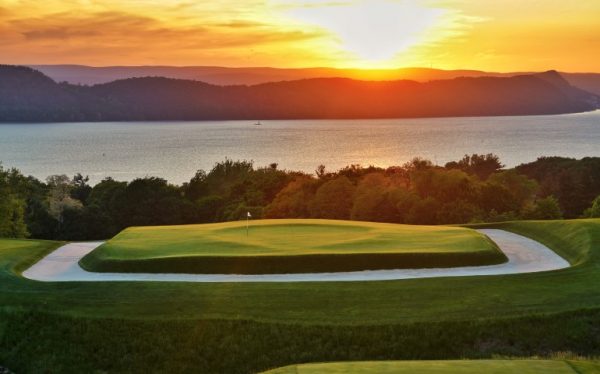

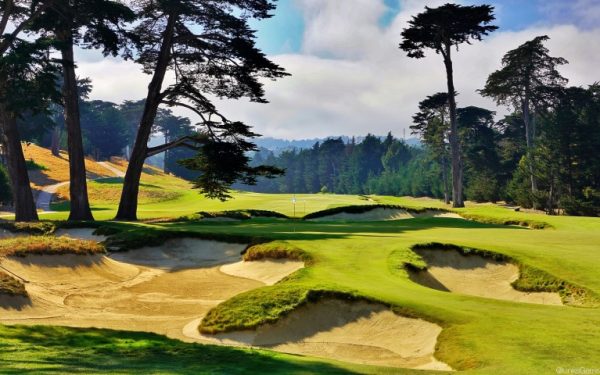
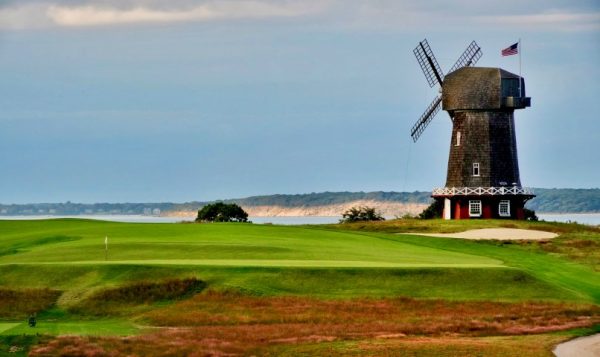
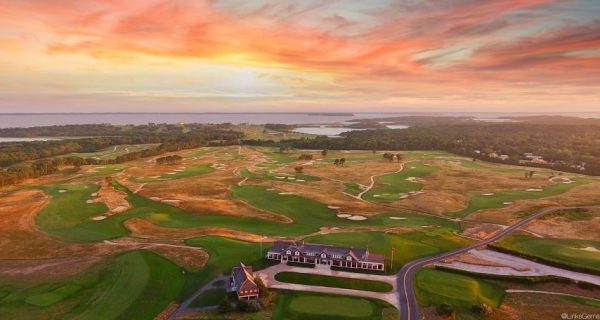
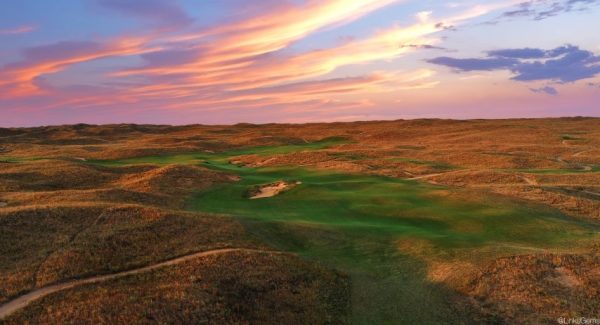
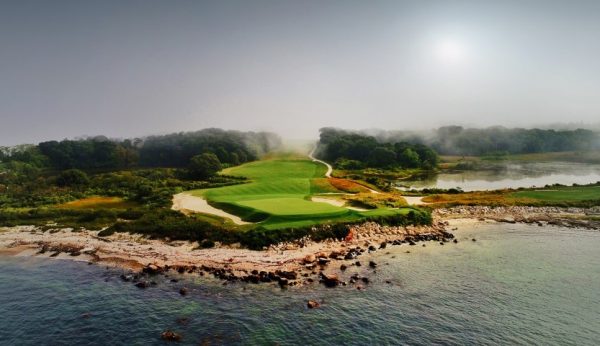
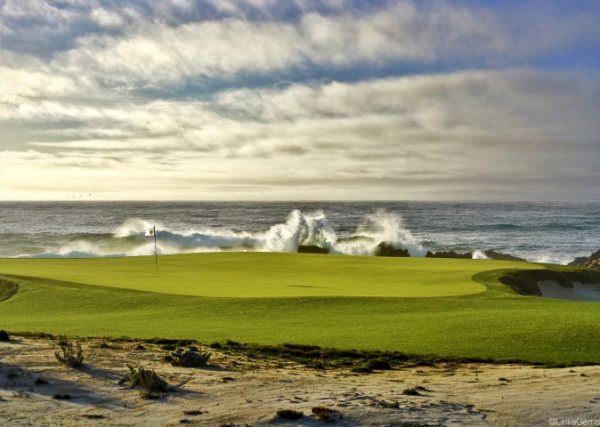

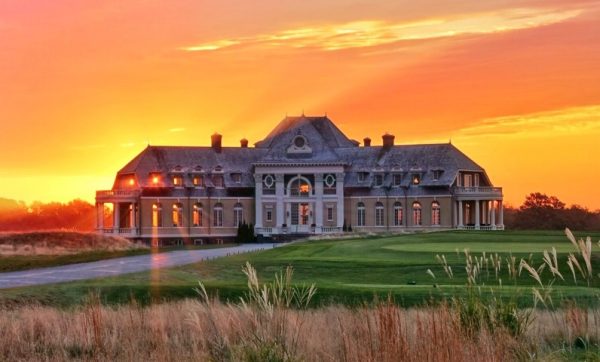

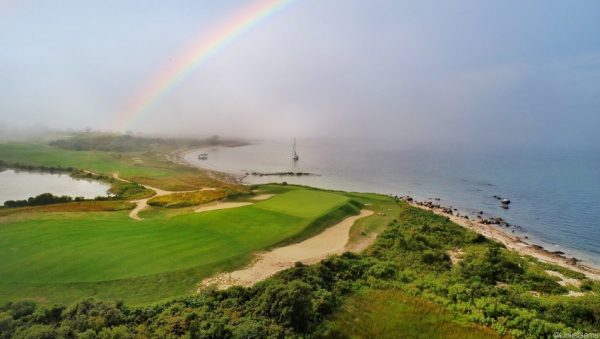






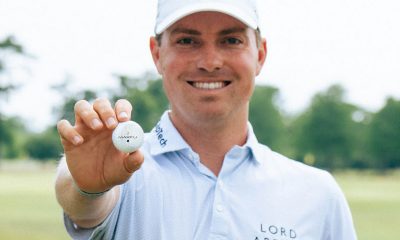


















gunmetal
Apr 2, 2019 at 10:21 am
As a fellow golfer and Landscape photographer, the post processing is a bit heavy handed for my taste but some of the compositions are wonderful. Really great shots and a very cool article and interview.
Ronald Montesano
Apr 5, 2019 at 6:21 am
What would you have differently? Asking sincerely for a friend. Thanks for your thoughts.
rm
Steve
Apr 1, 2019 at 5:46 pm
Enjoyed the interview Ron, very informative, especially having the Bonus Question finish!
Ronald Montesano
Apr 5, 2019 at 6:22 am
Thank you, Steve. The bonus question is always a favorite of mine. Interviewers mull which questions to ask, but invariably miss one. It is usually the favorite of most readers as well!
rm